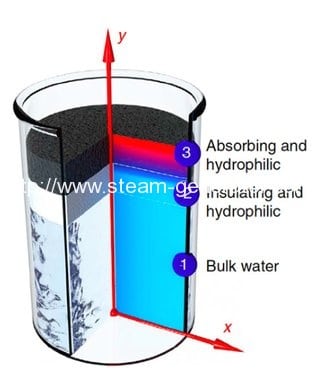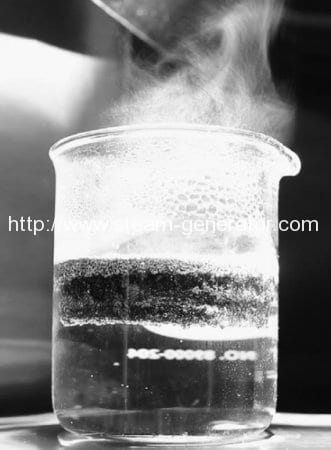MIT turns solar steam into cheaper energy, clean water
MIT scientists and engineers have a new twist on phase-changing
renewable technology. It combines the most efficient generation of solar
steam to date by our favorite energy machine, the sun, and a new
graphite-based collection system.

This method puts out the lowest optical concentration reported thus far: steam generation at an intensity about 10 times that of a sunny day.
The new material will enable steam generators to function with much
lower sunlight concentration and cheaper tracking systems. It has the
potential to replace both the super-high-intensity nanoparticle
generation method and the relatively inefficient and massive mirror
fields previously used to produce steam.
The secret is a material that can both efficiently absorb sunlight
and generate steam at a liquid’s surface. It is hydrophilic and
thermally insulating, absorbs in the solar spectrum, and has
interconnected pores. Hadi Ghasemi, a postdoc in MIT’s Department of
Mechanical Engineering, led the development of the structure. He and and
mechanical engineering head Gang Chen, along with five others at MIT,
report on the details of the new steam-generator in the journal Nature Communications.
Basically, the solar steam process starts by exfoliating a thin layer
of graphite. You place it in a microwave and create graphite “popcorn.”
The graphite bubbles up and forms a nest of flakes, resulting in a
porous material that absorbs and retains solar energy more effectively
than current methods.
Researchers then array the material on a thin, double-layered, disc-shaped structure,
graphite on top. On the bottom is a sponge-like carbon foam containing
pockets of air that both keep the foam afloat and insulate the
underlying liquid. This foam has very small pores to allow water to
float up through the structure via capillary action.

Enter the sunlight. It hits the structure and creates a hotspot in
the graphite layer. The pressure gradient generated draws water up
through the carbon foam. As water seeps into the graphite layer, the
heat concentrated in the graphite turns the water into steam.
In principle, it’s just like a sponge placed in water on a hot, sunny
day, which can continuously absorb and evaporate liquid. Along with its
potential power uses, the solar steam system will be able to desalinate
and/or decontaminate impure and waste water.
One commenter suggested that one day, it may even enable
solar-powered hot water cars! Scaled up, this arrangement of relatively
inexpensive materials would likely eliminate the need for complex,
costly systems to concentrate sunlight. The research team was able to
convert 85% of solar energy into steam at an intensity 10 times
that of a typical sunny day. Ghasemi says different combinations of
materials used in the two layers may lead to even higher efficiencies at
lower concentrations. More work for MIT, and greater glory.

